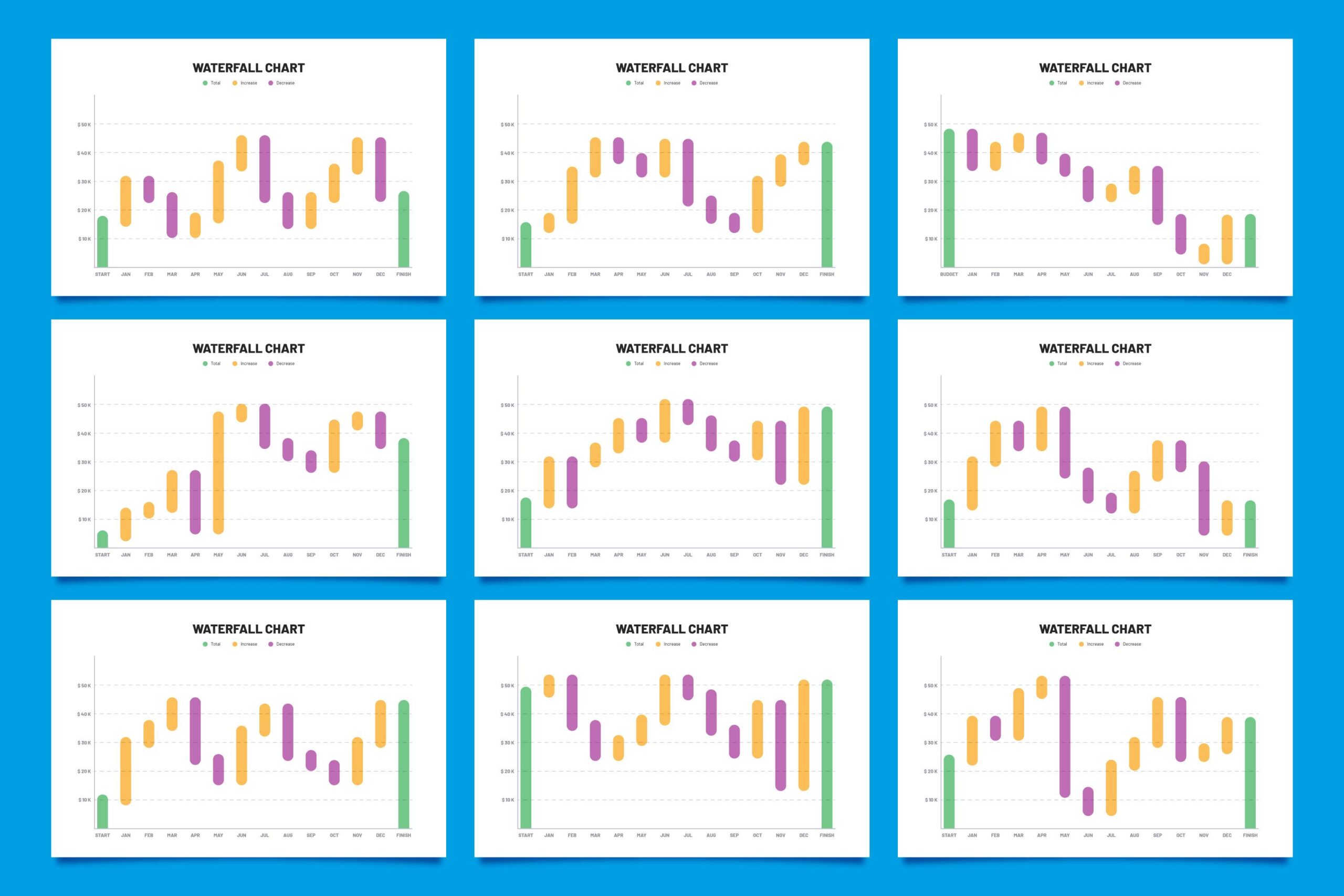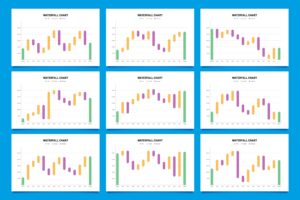Have you ever looked at a stock chart and wondered if there’s a hidden pattern telling you exactly when to buy or sell? Understanding a Chart Pattern can completely change the way you approach trading. It’s like having a secret map that reveals trends, signals, and opportunities in the market—without guesswork. Whether you’re a beginner or someone with experience, recognizing these patterns can help you make smarter decisions and potentially boost your profits.
Table of Contents
What is a Chart Pattern?
A Chart Pattern is a visual representation of price movements in the stock, forex, or crypto markets. By studying these patterns, you can identify trends, potential reversals, and breakout points. Essentially, they are like the footprints left by market participants, showing where buyers and sellers have stepped.
- Trend Indicators: Patterns reveal whether a market is in an upward, downward, or sideways trend.
- Predictive Power: Recognizing a familiar pattern can give clues about future price movements.
- Decision Support: They help you plan entries and exits instead of relying on guesswork.
Think of a chart as a story: each candlestick and line tells a piece of it. Chart Patterns give you the ability to read that story and act wisely.
Types of Chart Patterns You Must Know
There are several Chart Patterns, each with unique characteristics. Understanding them helps you spot opportunities quickly.
Head and Shoulders
- Looks like a person’s head between two shoulders.
- Signals a potential reversal in trend.
- Example: A bullish market may turn bearish after this pattern.
Double Top and Double Bottom
- Double Top: Peaks twice at similar price levels—may signal downward reversal.
- Double Bottom: Dips twice at similar support—may indicate an upward reversal.
Triangles
- Ascending Triangle: Often bullish. Prices push higher, forming a horizontal resistance.
- Descending Triangle: Usually bearish. Prices trend lower toward a support line.
- Symmetrical Triangle: Market is indecisive; breakout can be in either direction.
Triangles are excellent for spotting breakout opportunities with limited risk.
Flags and Pennants
Also Read: How to Open a New Trading Account
Other Chart Patterns You Should Recognize
Cup and Handle
Rounding Bottom
- Also called a “saucer” pattern.
- Indicates a slow shift from bearish to bullish trend.
- Useful for spotting long-term accumulation zones.
Wedges (Rising and Falling)
Diamond Pattern
- Looks like a diamond shape on a chart.
- Indicates potential trend reversal, either bullish or bearish.
- Works best with high-volume confirmation and larger time frames.
Rectangles (Consolidation Zones)
- The price tends to trade horizontally, bouncing between defined support and resistance.
- Breakout from a rectangle often leads to continuation in the prior trend.
- Helps identify clear risk-reward trade setups.
Also Read: Color Trading Magic
Why a Chart Pattern is Powerful
Understanding a Chart Pattern gives you an edge over traders who rely on luck or news alone.
- Clarity: You can see where buyers and sellers dominate.
- Timing: Helps plan entries and exits more effectively.
- Confidence: Knowing the pattern reduces emotional decisions.
For example, spotting a double bottom at a key support level can give you confidence to buy, knowing that history suggests a possible upward move.
Also Read: Positional Trading
How to Read a Chart Pattern Effectively
Reading a Chart Pattern isn’t just about recognizing shapes; it’s about context.
- Time Frame Matters: Daily, hourly, or weekly charts can show different patterns.
- Volume Confirmation: Patterns are stronger when accompanied by increased trading volume.
- Pair them with indicators like RSI, MACD, or moving averages to confirm signals.
Make sure the pattern aligns with the bigger market direction. This simple question keeps your analysis grounded.
Also Read: Options Trading
Common Mistakes When Using Chart Pattern
Even experienced traders make mistakes with Chart Patterns. Avoid these pitfalls:
- Ignoring Trend: Patterns are more reliable when aligned with the main trend.
- Overcomplicating: Not every irregular shape is a pattern—stick to tested ones.
- No Confirmation: Entering trades without volume or indicator support increases risk.
- Chasing Breakouts: Wait for a confirmed breakout instead of guessing.
Remember, patterns are guides, not guarantees.
Also Read: Hedging
Real-Life Examples of Chart Patterns
Seeing patterns in action makes understanding easier. Let’s consider a practical example:
- Stock X: Formed a double bottom near ₹150.
- Observation: Trading volume increased as it bounced off support.
- Result: Price moved up 25% over two months.
Such examples show that a Chart Pattern, when confirmed with volume and trend analysis, can provide actionable signals.
Also Read: ETFs
Chart Patterns for Beginners
If you’re just starting, focus on simple, reliable patterns:
- Double Top/Bottom: Easy to spot and understand.
- Head and Shoulders: Clear reversal signals.
- Triangles: Great for breakout trades.
Start by observing charts daily, noting patterns without trading first. Your recognition skills will improve naturally.
Also Read: Sector Rotation
Using The Chart Pattern in Your Trading Strategy
A Chart Pattern isn’t an isolated tool. Use it as part of a broader strategy:
- Set Entry Points: Buy near support or breakout points.
- Set Stop Loss: Protect yourself if the pattern fails.
- Determine Targets: Estimate price moves based on pattern size.
Integrating patterns with risk management is the key to consistent profits.
Also Read: Gift Nifty
Advanced Tips for Chart Pattern Trading
Once comfortable, you can level up:
- Multi-Timeframe Analysis: Check patterns on 1-hour, daily, and weekly charts.
- Pattern Confluence: Look for multiple patterns aligning with the same target.
- Backtesting: Study historical patterns to see which work best for your chosen asset.
Advanced strategies help reduce false signals and increase confidence.
Also Read: Color Trading Mastery
Psychological Benefits of Chart Pattern Knowledge
Understanding a Chart Pattern isn’t just technical—it also helps your mindset:
- Reduces Fear: Knowing entry and exit points builds confidence.
- Reduces Impulsiveness: You trade based on data, not emotions.
- Builds Patience: Waiting for patterns to form teaches disciplined trading.
Trading becomes less stressful when you rely on structure rather than luck.
Also Read: What is Commodity Trading
FAQs About Chart Pattern
Can a Chart Pattern guarantees profits?
No pattern guarantees profit, but they improve your probability of success. Use alongside risk management.
How long does it take to recognize patterns?
With regular practice, beginners can start spotting reliable patterns in 2–3 months.
Are chart patterns suitable for day trading?
Yes, some patterns like flags and triangles work well for short-term trades.
Can I combine chart patterns with indicators?
Absolutely! Indicators like RSI, MACD, or moving averages confirm patterns and reduce risks.
Also Read: Market Capitalization
Closing Thought
A Chart Pattern is more than lines on a chart—it’s a roadmap to smarter trading. The key is patience, practice, and observation. Start by learning simple patterns, integrate them with your strategy, and watch your confidence and trading results improve. Remember, consistency matters more than speed. Every pattern you recognize brings you closer to making informed, profitable decisions.
Also Read: IPO Strategies







